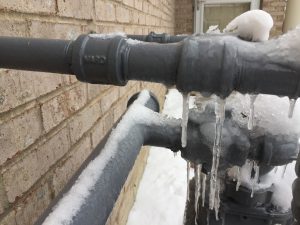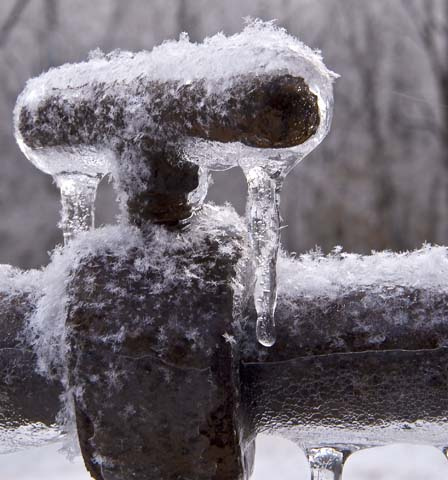Tips to Maintain Your Pipes from Freezing Damage: Important Tips
Tips to Maintain Your Pipes from Freezing Damage: Important Tips
Blog Article
Each person has got their own unique conception involving Helpful Tips to Prevent Frozen Pipes this Winter.

Winter can ruin your plumbing, especially by freezing pipelines. Below's just how to prevent it from happening and what to do if it does.
Introduction
As temperatures decrease, the danger of icy pipes rises, potentially causing costly repair work and water damages. Understanding how to avoid icy pipelines is essential for house owners in cool climates.
Prevention Tips
Insulating susceptible pipelines
Cover pipelines in insulation sleeves or make use of warmth tape to protect them from freezing temperature levels. Focus on pipes in unheated or exterior areas of the home.
Home heating strategies
Maintain indoor rooms adequately heated, specifically locations with pipes. Open closet doors to enable cozy air to circulate around pipes under sinks.
Just how to identify icy pipes
Search for reduced water flow from faucets, unusual odors or sounds from pipelines, and visible frost on exposed pipelines.
Long-Term Solutions
Structural adjustments
Take into consideration rerouting pipelines away from outside walls or unheated locations. Include additional insulation to attics, cellars, and crawl spaces.
Upgrading insulation
Buy top notch insulation for pipes, attic rooms, and wall surfaces. Appropriate insulation aids preserve regular temperature levels and reduces the danger of icy pipes.
Securing Exterior Pipes
Garden hose pipes and exterior taps
Disconnect and drain garden tubes before winter season. Set up frost-proof faucets or cover exterior taps with insulated caps.
Comprehending Frozen Pipelines
What triggers pipelines to ice up?
Pipelines ice up when revealed to temperature levels listed below 32 ° F (0 ° C) for expanded durations. As water inside the pipes ices up, it broadens, putting pressure on the pipe walls and potentially causing them to burst.
Risks and damages
Frozen pipelines can bring about water disturbances, residential or commercial property damage, and pricey repair services. Burst pipes can flooding homes and trigger comprehensive structural damages.
Indications of Frozen Pipes
Recognizing frozen pipelines early can avoid them from rupturing.
What to Do If Your Pipes Freeze
Immediate actions to take
If you presume icy pipes, keep faucets available to soothe pressure as the ice thaws. Make use of a hairdryer or towels soaked in warm water to thaw pipes gradually.
Final thought
Protecting against icy pipes calls for proactive actions and quick feedbacks. By comprehending the reasons, signs, and preventive measures, home owners can safeguard their pipes throughout cold weather.
5 Ways to Prevent Frozen Pipes
Drain Outdoor Faucets and Disconnect Hoses
First, close the shut-off valve that controls the flow of water in the pipe to your outdoor faucet. Then, head outside to disconnect and drain your hose and open the outdoor faucet to allow the water to completely drain out of the line. Turn off the faucet when done. Finally, head back to the shut-off valve and drain the remaining water inside the pipe into a bucket or container. Additionally, if you have a home irrigation system, you should consider hiring an expert to clear the system of water each year.
Insulate Pipes
One of the best and most cost-effective methods for preventing frozen water pipes is to wrap your pipes with insulation. This is especially important for areas in your home that aren’t exposed to heat, such as an attic. We suggest using foam sleeves, which can typically be found at your local hardware store.
Keep Heat Running at 65
Your pipes are located inside your walls, and the temperature there is much colder than the rest of the house. To prevent your pipes from freezing, The Insurance Information Institute suggests that you keep your home heated to at least 65 degrees, even when traveling. You may want to invest in smart devices that can keep an eye on the temperature in your home while you’re away.
Leave Water Dripping
Moving water — even a small trickle — can prevent ice from forming inside your pipes. When freezing temps are imminent, start a drip of water from all faucets that serve exposed pipes. Leaving a few faucets running will also help relieve pressure inside the pipes and help prevent a rupture if the water inside freezes.
Open Cupboard Doors
Warm your kitchen and bathroom pipes by opening cupboards and vanities. You should also leave your interior doors ajar to help warm air circulate evenly throughout your home.

Do you really like reading about Preventing and dealing with frozen pipes? Write feedback below. We will be pleased to hear your ideas about this posting. We hope that you come back again in the near future. Enjoyed reading our blog posting? Please share it. Let others check it out. Thank you so much for your time spent reading it.
Call Report this page